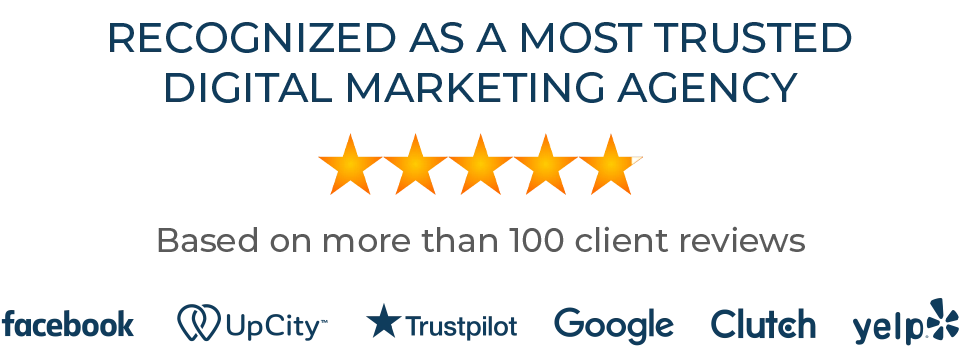Advertising, just like fashion, is constantly evolving to meet the needs and tastes of the rising generation. But how do you advertise to a generation that has been so saturated with advertisements and constantly wants the newer, bigger, and better thing? This generation can be hard to nail down and if you’ve been online at all in the last five years you have seen much written about their tastes, style, and general personality.
 The issue, however, is that many of the people writing these articles are gleaning their information about what this generation likes and wants from other, outdated articles about what this generation likes and wants. One, for example, cites Mark Zuckerberg as the leader of the new generation, but anyone who knows anyone under the age of thirty can tell you that Facebook is mostly for moms and old people now.
The issue, however, is that many of the people writing these articles are gleaning their information about what this generation likes and wants from other, outdated articles about what this generation likes and wants. One, for example, cites Mark Zuckerberg as the leader of the new generation, but anyone who knows anyone under the age of thirty can tell you that Facebook is mostly for moms and old people now.
The younger generations are defecting away from this platform at lightning speed as they’ve seen their parents and even grandparents adopt it.
So, how do you advertise to a generation that seems to be evolving at a rate that neither demographic surveys nor professional psychological tests can keep up with?
Luckily, the tenets of advertising still ring true and perhaps even truer for this generation than they have in past generations. Here’s what you need to do:
1. Create authentic content
Many people believe that the internet has put barriers in between people, but in many regards, it has actually made younger generations more social and better capable of identifying authenticity.
And they hate in-authenticity more than just about anything else. They can smell it a mile away and will punish you as a brand for it if they sense it. The solution is to only actually create content that you believe in and that accurately represents your brand. This is the best way to generate trust in a generation that trusts almost nothing. A huge part of this is learning the lingo or, at the very least, knowing that you don’t know the lingo so you won’t use it incorrectly. Nothing will label you “uncool” faster than not understanding what an acronym or slang term is and obviously using it the wrong way.
2. Lay off outbound marketing
The demand generation does not trust traditional marketing methods. What might work on their parents (for example, sending out random mass email campaigns), probably will not work on the younger generation. Most outbound marketing tools like print ads, sidebar ads, radio spots, and emails simply will not work on the average person anymore, particularly because of how impersonal these campaigns are. They are all about flash and logo, and while the older generations might spend a lot of time decrying the current generation and their obsession with the new and flashy, they actually want substance.

3. Focus on inbound marketing
This generation wants to know why they should buy from you, not just what you have to offer. In the past, you might have just been able to put your product listings up on your website and not worry too much about talking about benefits in a blog post or by other means. Today, however, inbound marketing is the lifeblood of any business that wants to sell to the demand generation. They want to hear what experts have to say (a good example of this is makeup companies hiring beauty gurus on YouTube to review their products) and they want to see traces of products or brands on social media and blogs. Before taking the plunge, they want to know that someone else has already done it and has been satisfied by their purchase.
4. Content made to inform, not to sell
You’ve probably been in a conversation with someone, whether you realized they were a salesperson or not, and slowly began to understood that they are not having a conversation with you because they care about your needs, but rather because they want your money.
This is a frustrating place to be, especially if you originally believed that that person had your best interests at heart. This is what the demand generation goes through every single day with brands. They are on the lookout for informative, educational content that enlightens. Too often they click on an article expecting to be informed and instead discover that they are being presented with a hard sell. What are they going to do? Click away. Your best bet is to post content that is actually just information, rather than a “cleverly” disguised sales pitch. If you actually make an effort to present them with real content, your products or services will sell themselves.
5. Don’t give up on content marketing
Content marketing is one of the most evergreen marketing tactics. It’s been around for over a hundred years and has seen success across the century. People have always and still want to buy from brands that provide them with great content that they can actually use. In 1895, it was John Deere giving away a book with the best farming tips to help farmers make more money from their plots. This year, it could be your business, giving away a whitepaper or ebook that informs your customers about an aspect of their lives. This naturally endears your business to the customer—you’ll be at the forefront of their mind the next time a buying decision presents itself.
Conversation
What tactics have you found beneficial for reaching out to the growing Demand Generation? What data are you using to increase conversions? The goal of reaching the first page of Google alone is changing, and buyers are truly looking to spend their money on experiences, and with an expert.
Gary Vaynerchuk recently said that “years ago you could say you were the expert at this or that. Now, the world wants you to prove it” using social proof, video, and expert information. Tell me in the comments what tactics you’re using to prove it to the world that you’re the expert in your field, and that consumers should trust your expertise.
Cheers!
Advertising, just like fashion, is constantly evolving to meet the needs and tastes of the rising generation. But how do you advertise to a generation that has been so saturated with advertisements and constantly wants the newer, bigger, and better thing? This generation can be hard to nail down and if you’ve been online at all in the last five years you have seen much written about their tastes, style, and general personality.
 The issue, however, is that many of the people writing these articles are gleaning their information about what this generation likes and wants from other, outdated articles about what this generation likes and wants. One, for example, cites Mark Zuckerberg as the leader of the new generation, but anyone who knows anyone under the age of thirty can tell you that Facebook is mostly for moms and old people now.
The issue, however, is that many of the people writing these articles are gleaning their information about what this generation likes and wants from other, outdated articles about what this generation likes and wants. One, for example, cites Mark Zuckerberg as the leader of the new generation, but anyone who knows anyone under the age of thirty can tell you that Facebook is mostly for moms and old people now.
The younger generations are defecting away from this platform at lightning speed as they’ve seen their parents and even grandparents adopt it.
So, how do you advertise to a generation that seems to be evolving at a rate that neither demographic surveys nor professional psychological tests can keep up with?
Luckily, the tenets of advertising still ring true and perhaps even truer for this generation than they have in past generations. Here’s what you need to do:
1. Create authentic content
Many people believe that the internet has put barriers in between people, but in many regards, it has actually made younger generations more social and better capable of identifying authenticity.
And they hate in-authenticity more than just about anything else. They can smell it a mile away and will punish you as a brand for it if they sense it. The solution is to only actually create content that you believe in and that accurately represents your brand. This is the best way to generate trust in a generation that trusts almost nothing. A huge part of this is learning the lingo or, at the very least, knowing that you don’t know the lingo so you won’t use it incorrectly. Nothing will label you “uncool” faster than not understanding what an acronym or slang term is and obviously using it the wrong way.
2. Lay off outbound marketing
The demand generation does not trust traditional marketing methods. What might work on their parents (for example, sending out random mass email campaigns), probably will not work on the younger generation. Most outbound marketing tools like print ads, sidebar ads, radio spots, and emails simply will not work on the average person anymore, particularly because of how impersonal these campaigns are. They are all about flash and logo, and while the older generations might spend a lot of time decrying the current generation and their obsession with the new and flashy, they actually want substance.

3. Focus on inbound marketing
This generation wants to know why they should buy from you, not just what you have to offer. In the past, you might have just been able to put your product listings up on your website and not worry too much about talking about benefits in a blog post or by other means. Today, however, inbound marketing is the lifeblood of any business that wants to sell to the demand generation. They want to hear what experts have to say (a good example of this is makeup companies hiring beauty gurus on YouTube to review their products) and they want to see traces of products or brands on social media and blogs. Before taking the plunge, they want to know that someone else has already done it and has been satisfied by their purchase.
4. Content made to inform, not to sell
You’ve probably been in a conversation with someone, whether you realized they were a salesperson or not, and slowly began to understood that they are not having a conversation with you because they care about your needs, but rather because they want your money.
This is a frustrating place to be, especially if you originally believed that that person had your best interests at heart. This is what the demand generation goes through every single day with brands. They are on the lookout for informative, educational content that enlightens. Too often they click on an article expecting to be informed and instead discover that they are being presented with a hard sell. What are they going to do? Click away. Your best bet is to post content that is actually just information, rather than a “cleverly” disguised sales pitch. If you actually make an effort to present them with real content, your products or services will sell themselves.
5. Don’t give up on content marketing
Content marketing is one of the most evergreen marketing tactics. It’s been around for over a hundred years and has seen success across the century. People have always and still want to buy from brands that provide them with great content that they can actually use. In 1895, it was John Deere giving away a book with the best farming tips to help farmers make more money from their plots. This year, it could be your business, giving away a whitepaper or ebook that informs your customers about an aspect of their lives. This naturally endears your business to the customer—you’ll be at the forefront of their mind the next time a buying decision presents itself.
Conversation
What tactics have you found beneficial for reaching out to the growing Demand Generation? What data are you using to increase conversions? The goal of reaching the first page of Google alone is changing, and buyers are truly looking to spend their money on experiences, and with an expert.
Gary Vaynerchuk recently said that “years ago you could say you were the expert at this or that. Now, the world wants you to prove it” using social proof, video, and expert information. Tell me in the comments what tactics you’re using to prove it to the world that you’re the expert in your field, and that consumers should trust your expertise.
Cheers!
Published on February 22, 2017


